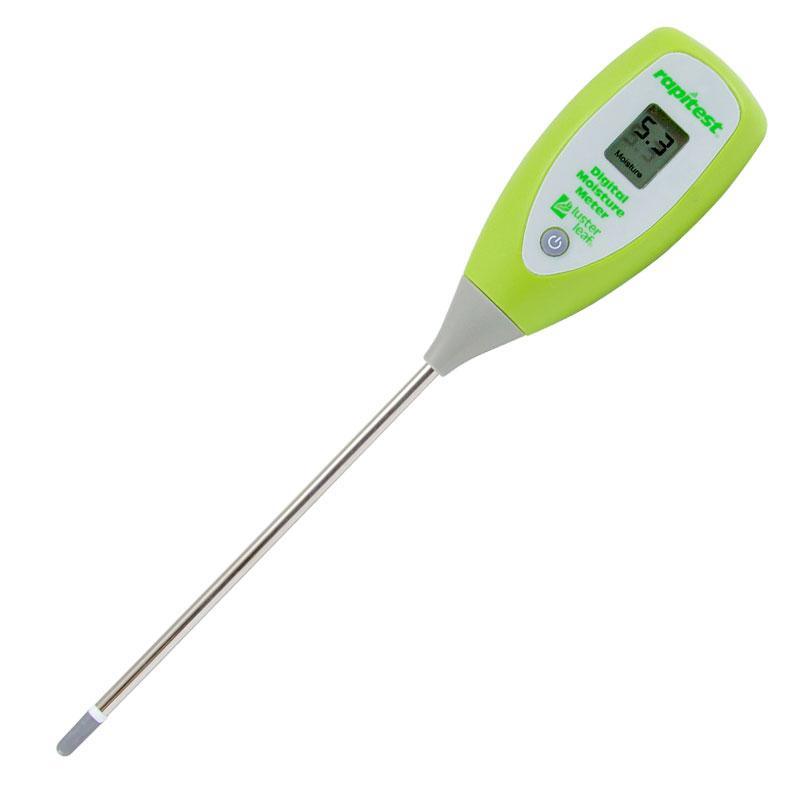The Ultimate Guide to Moisture Meters: A Comprehensive Overview and Just How They Can Conserve You Money
In the realm of building upkeep, building and construction, and different markets, the importance of accurately measuring moisture levels can not be overemphasized. Wetness meters act as crucial devices in discovering and checking moisture web content in products, assisting in protecting against expensive damages and making certain the high quality of products. Understanding the subtleties of different kinds of wetness meters, their applications, and the potential cost-saving benefits they supply can be a game-changer for organizations and experts alike. Discovering exactly how these gadgets can not only enhance processes yet also add to monetary savings is a trip worth starting.
Kinds Of Moisture Meters
One common type is the pin-type wetness meter, which gauges the electrical resistance in between 2 pins inserted into a material. Pinless wetness meters, on the various other hand, use electro-magnetic sensing unit plates to scan a larger area without triggering damage to the material's surface.
Infrared dampness meters measure the thermal properties of a product to establish its wetness material non-invasively, making them useful for applications where pin or pinless meters might not be appropriate. Comprehending the various kinds of dampness meters readily available can aid markets select the most appropriate device for their details dampness dimension requirements.

Advantages of Utilizing Moisture Meters

Additionally, utilizing dampness meters can bring about increased energy effectiveness. By determining locations with high dampness degrees, such as leaks or poor insulation, adjustments can be made to enhance power preservation and reduce utility costs. In agricultural settings, moisture meters play an important duty in maximizing plant returns by making it possible for farmers to keep track of dirt dampness degrees and make educated watering choices. On the whole, the advantages of using moisture meters span across numerous sectors, giving cost-efficient solutions and promoting better quality assurance techniques.
Just How to Select the Right Moisture Meter
Selecting the appropriate dampness meter entails taking into consideration crucial elements such as product compatibility, dimension range, and calibration accuracy. When choosing a moisture meter, it's necessary to make certain that the meter appropriates for the specific product you will be testing. Various products have differing electric homes that can influence dampness analyses, so selecting a meter created for your product is critical for accurate outcomes. Additionally, take into consideration the dimension variety of the dampness meter. Make sure that the meter can spot dampness levels within the variety required for your applications. Calibration accuracy is another essential element to bear in mind (Moisture Meter). Select a wetness meter with dependable calibration to make certain constant and specific readings. Some meters may call for periodic calibration modifications, so recognizing the calibration process is essential. By carefully examining these variables, you can choose a wetness meter that her response meets your requirements and supplies accurate moisture measurements for your jobs.
Proper Techniques for Moisture Meter Usage
To make certain exact moisture readings and maximize the effectiveness of a wetness meter, utilizing correct strategies is essential. When using a pin-type wetness meter, place the pins or probes right into the product being examined until they make full contact. Ensure the pins are perpendicular to the surface to get the most exact reading. For pinless wetness meters, hold the gadget flat versus the material and move it gradually to cover the whole location for an ordinary analysis. It's important to calibrate the dampness meter according to the product being examined to boost precision. Take multiple readings across the surface area and ordinary them out for an extra trusted outcome. Additionally, ensure that the product being examined is acclimated to the setting to stop manipulated analyses. Routine upkeep of the wetness meter, such as cleaning up the pins or sensing unit, is additionally essential to make sure accurate and regular analyses. By complying with these appropriate methods, users can count on their wetness meter to offer trustworthy dampness degrees, helping in preventing pricey damage or ensuring top quality in different applications.

Price Financial Savings Through Moisture Meter Applications
Exactly how can the calculated application of moisture meters lead to significant cost savings across different sectors? In the agriculture industry, moisture meters aid in identifying the optimum time for collecting plants, preventing over-drying or excess moisture that can impact the final product's top quality.

In addition, in the food handling sector, dampness meters are essential for keeping an eye on item high quality and making sure conformity with security guidelines. By precisely measuring wetness material in food, producers can avoid wasting, keep quality, and minimize waste, leading to significant cost financial savings. On the whole, the critical application of wetness meters is a useful financial investment that can result in substantial cost decreases and enhanced efficiency throughout different markets.
Conclusion
In final thought, dampness meters are important devices for detecting and determining wetness degrees in various products. By making use of the best wetness meter and adhering to proper methods, customers can effectively avoid expensive problems caused by excess wetness.
Wetness meters offer click for info as indispensable tools in finding and checking moisture content in materials, aiding in avoiding expensive problems and making certain the top quality of products. Infrared moisture meters measure the thermal residential properties of a product to determine its moisture content non-invasively, making them helpful for applications where pin or pinless meters may not be appropriate.Wetness meters provide vital benefits in precisely checking and evaluating wetness degrees in varied materials and environments. In agricultural setups, dampness meters play an essential duty in maximizing plant returns by making it possible for farmers to link monitor soil moisture degrees and make educated watering decisions.In conclusion, moisture meters are useful tools for spotting and measuring dampness degrees in different materials.